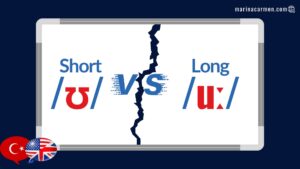Table of Contents
🇺🇸 A Quick Look
Imagine you’re watching an action movie.
In one scene, the hero catches the villain.
In another, the villain is caught by the hero.
The action is the same, but the focus changes!
Active:
👉 The hero saved the city.
(Focus on who did the action: the hero.)
Passive:
👉 The city was saved by the hero.
(Focus on what happened: the city being saved.)
See the difference?
In an Active sentence, we highlight the doer of the action.
In a Passive sentence, we focus on the result.
Want to learn when and why we use the passive?
Keep reading! 🚀
🇹🇷 Kısaca Bakalım
Bir aksiyon filmi izlediğinizi düşünün.
Bir sahnede kahraman kötü adamı yakalıyor.
Başka bir sahnede, kötü adam kahraman tarafından yakalanıyor.
Eylem aynı, ama odak değişiyor!
Etken:
👉 The hero saved the city.
Kahraman şehri kurtardı.
(Odak, eylemi yapan kişi: kahraman.)
Edilgen:
👉The city was saved by the hero.
Şehir kahraman tarafından kurtarıldı.
(Odak, ne olduğunda: şehrin kurtarılması.)
Farkıyı gördünüz mü?
Etken cümlede eylemi yapan kişiyi vurgularız.
Edilgen cümlede ise sonuç önemlidir.
Peki, Edilgen cümleleri ne zaman ve neden kullanıyoruz?
Okumaya devam edin! 🚀
🇺🇸 Active versus Passive
Active vs. Passive: What’s the Difference?
Let’s compare these two sentences:
Active:
J.K. Rowling wrote Harry Potter.
Passive:
Harry Potter was written by J.K. Rowling.
🇹🇷 Etken ve Edilgen Cümleler
Etken ve Edilgen Cümleler: Farkı Nedir?
Şu iki cümleyi karşılaştıralım:
Etken:
J.K. Rowling wrote Harry Potter.
(J.K. Rowling, Harry Potter’ı yazdı.)
Edilgen:
Harry Potter was written by J.K. Rowling.
(Harry Potter, J.K. Rowling tarafından yazıldı.)
🇺🇸 What changed?
In the Active sentence, the focus is on J.K. Rowling – the doer of the action.
In the Passive sentence, the focus is on Harry Potter – the thing affected by the action/the result of the action.
🇹🇷 Ne değişti?
Etken cümlede, odak noktası J.K. Rowling’dedir – eylemi yapan vurgulanır.
Edilgen cümlede, odak noktası Harry Potter’dır – eylemin sonucu vurgulanır.
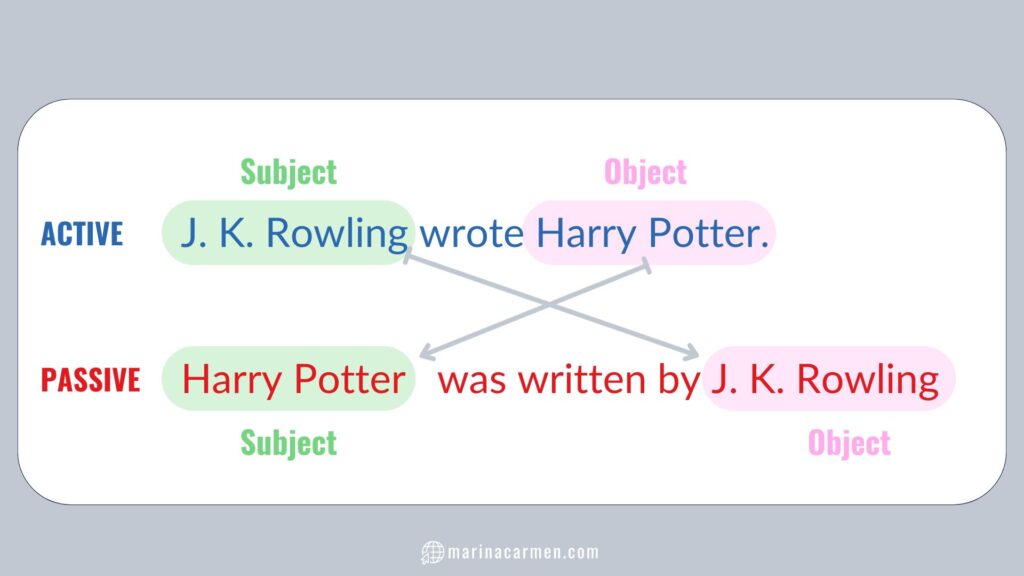
🇺🇸 How does it work?
In the Active sentence, J.K. Rowling (Subject) does the action (wrote).
The Subject DOES the action.
In the Passive sentence, Harry Potter (which was the Object in the Active sentence) becomes the new Subject. However, in this case, the Subject does NOT perform the action—instead, the action is done to the Subject.
(The Subject is the receiver of the action).
The action is still the same (was written), but now the focus is on what happened or on the result rather than who did it.
In Passive sentences, the Object of the Active sentence becomes the new Subject, but it does not do the action—it receives the action.
Passive voice highlights the outcome rather than the doer of the action.
In this example, we focus on the book (Harry Potter), not the person writing it (J.K Rowling).
🇹🇷 Nasıl çalışır?
Etken cümlede, J.K. Rowling (özne) eylemi yapar (yazdı).
Özne, eylemi yapar.
Edilgen cümlede Harry Potter – Etken cümlede nesne durumundayken, Edilgen cümlede özne durumuna geçer. Ancak bu durumda, özne eylemi gerçekleştirmez.—tam tersine, eylem özneye uygulatılır.
Eylem değişmez, (was written = tarafından yazıldı), ancak odak noktamız kimin yaptığı değil, eylemin sonucun ne olduğu önemlidir.
Edilgen çatı, eylemi yapan kişiden ziyade, sonucu vurgular.
Bu örnekte, kitabı yazan kişiyle (J.K. Rowling) değil, kitabın (Harry Potter) üzerine odaklanıyoruz.
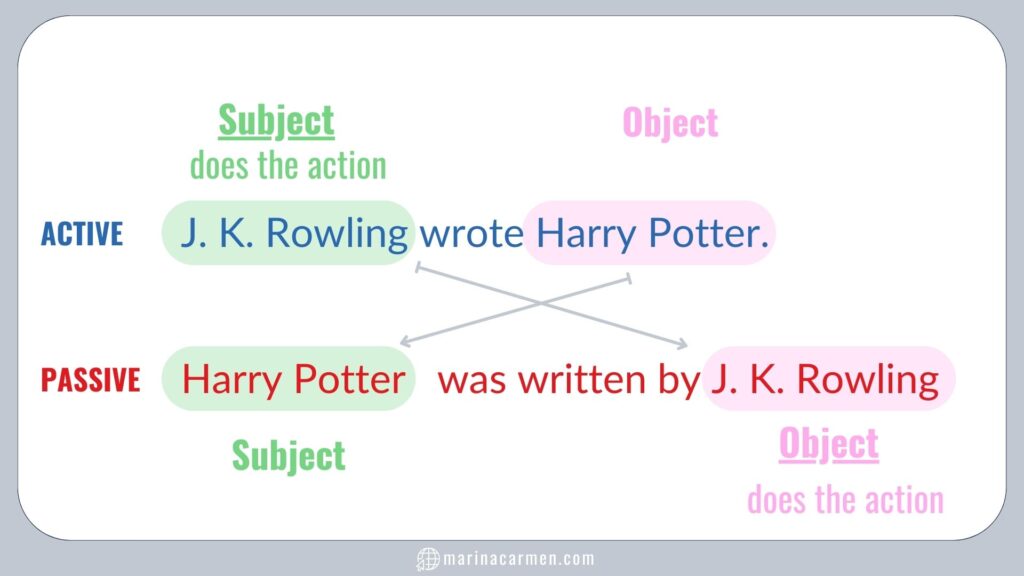
🇺🇸 FORM: How we make the Passive
The verb to BE + V3 (Past Participle)
Harry Potter was written by J.K. Rowling.
It is not always necessary to add who or what did the action.
We can leave out the doer (the person who does something).
Harry Potter was translated in 88 languages.
(It doesn’t matter who did the action, so it’s not specified.)
But if the doer is important, we can mention him or her by using a prepositional phrase (by + doer).
The letter was written by his uncle.
This necklace was given to me by my grandmother.
🇹🇷 Yapı: Edilgen Cümle Nasıl Oluşturulur?
“to BE” fiili + V3 (Fiilin 3. Hali)
Harry Potter was written by J.K. Rowling.
Eylemi kimin yaptığı her zaman belirtilmek zorunda değiliz.
Edilgen çatı kullanırken, eylemi yapan kişiyi belirtmeyebiliriz.
Harry Potter was translated in 88 languages.
Harry Potter, 88 dile çevrildi.
(Eylemi kimin yaptığı önemli değil, bu yüzden belirtilmemiş.)
Ancak, eylemi yapan kişi önemliyse, onu “by + kişi” yapısıyla belirtiriz.
The letter was written by his uncle.
Mektup, amcası tarafından yazıldı.
This necklace was given to me by my grandmother.
Bu kolye, bana büyükannem tarafından verildi.
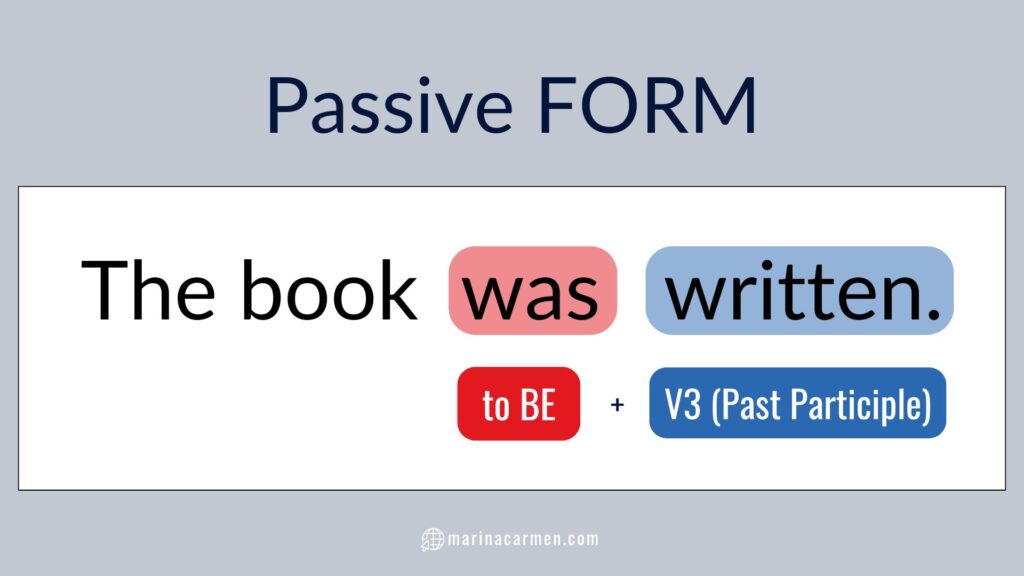
🇺🇸 When Do We Use Passive Voice?
- When the doer is unknown (We don’t know who did the action.)
My purse was stolen.
(We don’t know who took it.)
- When the doer is obvious (Everyone knows who does the action.)
The thief was arrested.
(Obviously by the police.) - When the doer is not important (Who did it doesn’t matter.)
This castle was built in 1876.
(The focus is on the castle, not the builders.)
- When we care more about the result than the person doing the action.
A new road was built last year.
(The key point is the new road, not who built it.)
Remember: Passive voice helps us focus on what happened rather than who did it! 🚀
🇹🇷 Edilgen Çatı’yı Ne Zaman Kullanırız?
- Eylemi yapan bilinmediğinde (Kimin yaptığı belli değil.)
Cüzdanım çalındı.
(Kimin çaldığını bilmiyoruz.)
- Eylemi yapan kişinin bariz belli olduğunda. (Herkes, kimin yaptığını biliyor.)
Hırsız tutuklandı.
(Belli ki polis tarafından.)
- Eylemi yapan kişi önemli olmadığında.
(Kimin yaptığı değil, olayın kendisi önemli.)
Bu kale 1876 yılında inşa edildi.
(Kim inşa etti, önemli değil.)
- Sonucun, eylemi yapan kişiden daha çok önemli olduğunda.
Geçen yıl yeni bir yol yapıldı.
(Önemli olan yolun yapılmış olması, kimin yaptığı değil.)
Unutma: Edilgen çatı, kimin yaptığı yerine, sonuca odaklanmamızı sağlar! 🚀
🇺🇸 TENSES
Only the form of BE changes to make the tense.
The Past Participle stays the same.
Here are examples of the Passive in its most common Tenses.
🇹🇷 Zamanlar
Sadece “to BE” fiilinin çekimi değişir, fiilin 3. hali (Past Participle) aynı kalır.
İşte en yaygın zamanlarda edilgen yapı örnekleri:
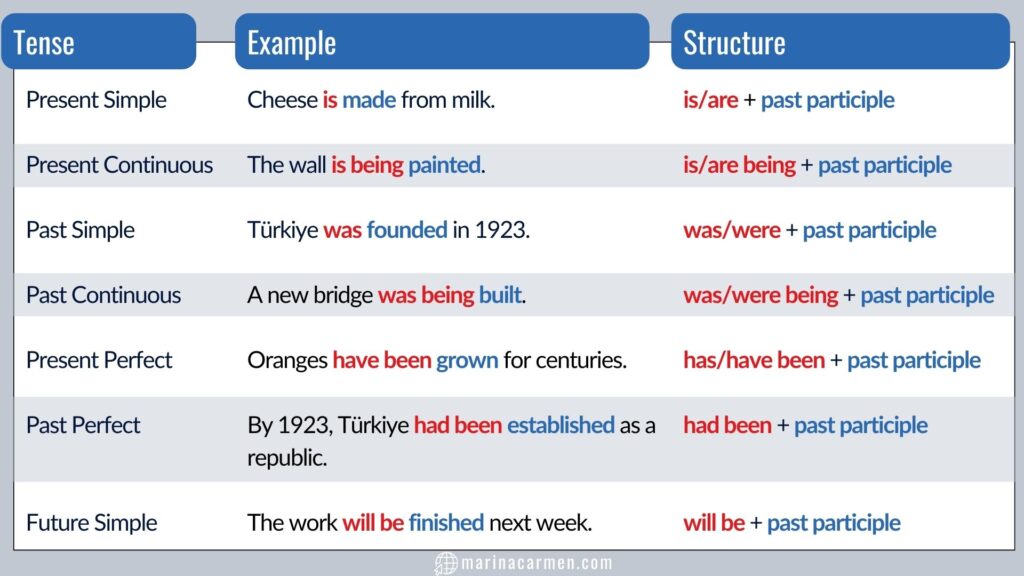
🇺🇸 Fluency Doesn’t Just Happen—Make It Happen!
Just like in Passive sentences, things don’t magically “get learned”—you take action!
Instead of waiting for Fluency to come to you, join a learning community where English is practiced, spoken, and mastered together.
✅ Engaging group lessons designed to help you speak confidently
✅ Learn actively—don’t just be the receiver of knowledge!
✅ Limited spots—only 8 available!
Be the Subject of your success!
Click the link below to join now and take control of your Fluency Journey. 🚀
🇹🇷 Akıcılık Kendiliğinden Gerçekleşmez—Sen Gerçekleştir!
Edilgen cümlelerde olduğu gibi, İngilizce “kendiliğinden öğrenilmez”—sen harekete geçmelisin!
Akıcılığı beklemek yerine, İngilizceyi konuşarak ve birlikte öğrenerek geliştireceğin bir topluluğa katıl.
✅ Özgüvenle konuşmanı sağlayacak dinamik grup dersleri
✅ Bilgiyi sadece almakla kalma, aktif öğren!
✅ Sınırlı kontenjan—yalnızca 8 kişilik yer var!
Başarının öznesi sen ol!
Hemen aşağıdaki linke tıkla ve akıcılık yolculuğunu başlat. 🚀


